
Many schools and universities have closed fully or partially to reduce the impact of COVID-19, but plenty are starting to open back up. However, the virus hasn’t gone away, and it looks likely to be with us for some time yet. So we need systems in place to mitigate the risks of transmission while we gradually return to something like normality.
Digital signage can form a valuable part of that toolkit. In this post, we’ll discuss best practices, talk about how to get the best from your COVID-19 digital signage, and examine some of the unique challenges schools and universities face during the pandemic and how to use digital signage to help address them. First, though — why should schools and universities use digital signage at all?
Why use digital signs in schools and universities?
Schools and universities need to communicate a range of information to a range of people. Students, teachers, non-teaching staff (like cleaners, security personnel and custodians), visitors, and others all need different information at different times.
Static signage isn’t effective at this, both because of the volume of communication required and because of the need to reach different audiences at different times throughout the day, week and semester.
A digital signage solution like Rise Vision does all that and more. You can tailor messages to their audiences, change them at short notice, and publish and manage them from a central dashboard.
General uses include events, reminders, announcements and even clocks and weather. But there are COVID-19-specific uses too, including:
- Distancing reminders
- Mask reminders
- Sneeze and cough protocol reminders
- Handwashing reminders
- General reminders of the dangers of COVID-19
- Updates on what the institution is doing to combat the spread of the virus
- Updates on changing schedules as the institution adjusts — cancelled or moved classes, for instance
How effective can these hope to be?
This is another area where digital signage wins out clearly over traditional static signage. Of the three behaviors everyone can do to combat the spread of the virus — masking/covering the face, distancing, and hand hygiene — hand hygiene is the most important.
If there’s a group of people who ought to know this it’s trainee doctors, yet in a study (unrelated to COVID-19) a group of student doctors did not wash their hands much, and a static sign encouraging them to do so had no measurable effect.
By contrast, a study that used an interactive reminder to wash hands saw handwashing in a clinical setting rise from 7.6% to 49%.
Digital signs are acknowledged to be far more effective at both acquiring attention and encouraging behavior than static signs, meaning if you really want to communicate your COVID messaging, digital signs should be on your radar — and if you already have Rise Vision or a similar system set up, it’s a great tool to improve your institution’s resistance to the virus.
What are the challenges?
In general, signage around schools and universities has to be more accurately targeted, more persuasive and more flexible than signage in the workplace.
Between different grades in K-12 — and arguably even more so between freshmen and seniors at college — there’s a huge gulf in knowledge, understanding and maturity. Messaging that hits home on a 21-year-old will bounce off an 18-year-old, who has totally different things on their mind.
Students aren’t employees — they can’t be ‘fired,’ don’t always respond to the same types of motivators as adults, and don’t necessarily identify with or share the goals of the organization in the way you’d expect adult employees to.
Adult employees aren’t monolithic either; visiting contractors need different messaging, presented differently, than cleaning staff or tenured professors.
And when it comes to COVID-19, schools and universities face unique challenges there too.
They’re highly porous. A school might be its own little community, but its borders with the outside world let a lot of visitors, students from around the city, parents, contractors, inspectors… they all come and add their pathogens, while you can’t keep the kids in the school, let alone the germs. Schools act as Petri dishes, and universities can be even worse, with transient populations of young adults.
How can schools and universities address these issues using digital signage?
By using highly responsive signage that doesn’t ask for the earth, and by communicating in a way that makes sense to the specific target audience.
Targeting to the audience
In schools for the very youngest children, general-purpose digital signs are likely to miss the mark. Their messaging will be too complex and their design marks them out as part of the adult world that the child can safely ignore.
This, for instance:
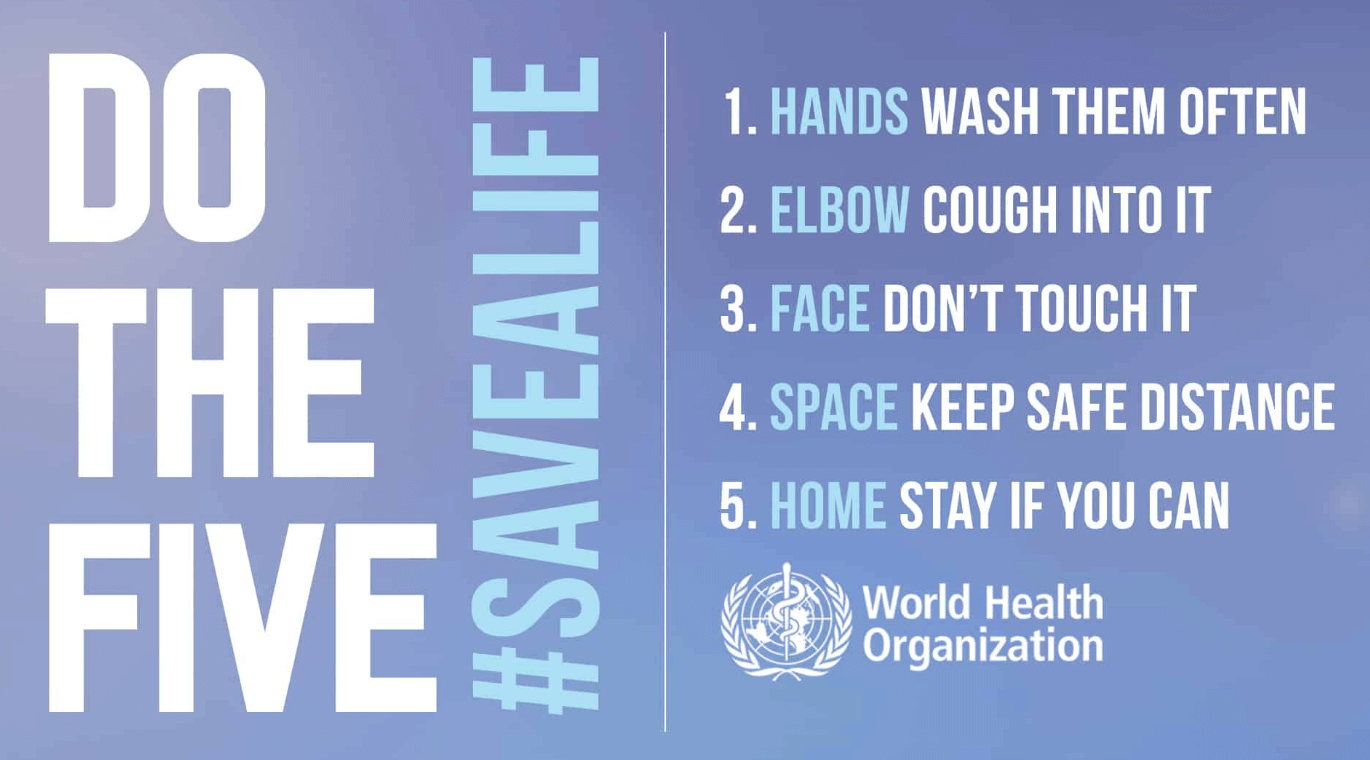
Contains a lot of crucial information, courtesy of the World Health Organization. But it’s very busy and text-heavy, and its buttoned-up blue-and-white color scheme makes it look very adult; just the kind of thing a child can afford to ignore.
By contrast, this:
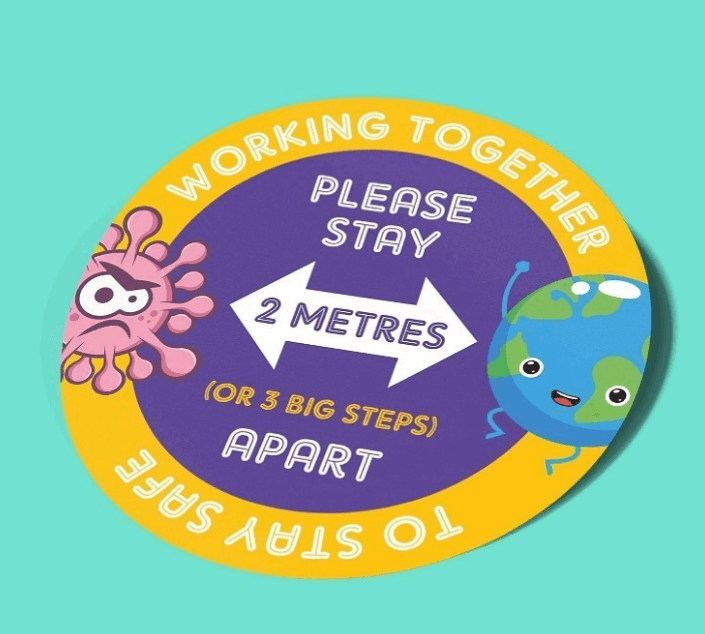
Is a lot more child-friendly and attention-grabbing.
When you’re aiming messaging at teens or young adults, it similarly needs to be tailored to their understanding and interests. We need to avoid the ‘greetings, fellow kids’ effect, but still not present kids on their way to the dorm with messaging that looks like it’s designed by IBM.
In addition to targeting different areas of interest and ways of looking at the world, it’s important to target audiences based on the kind of activities they’re likely to be doing and thus the kinds of risks they’re likely to be exposed to.
For instance, here’s a warning from the University of Maryland’s in-house digital signage toolkit, cautioning students:
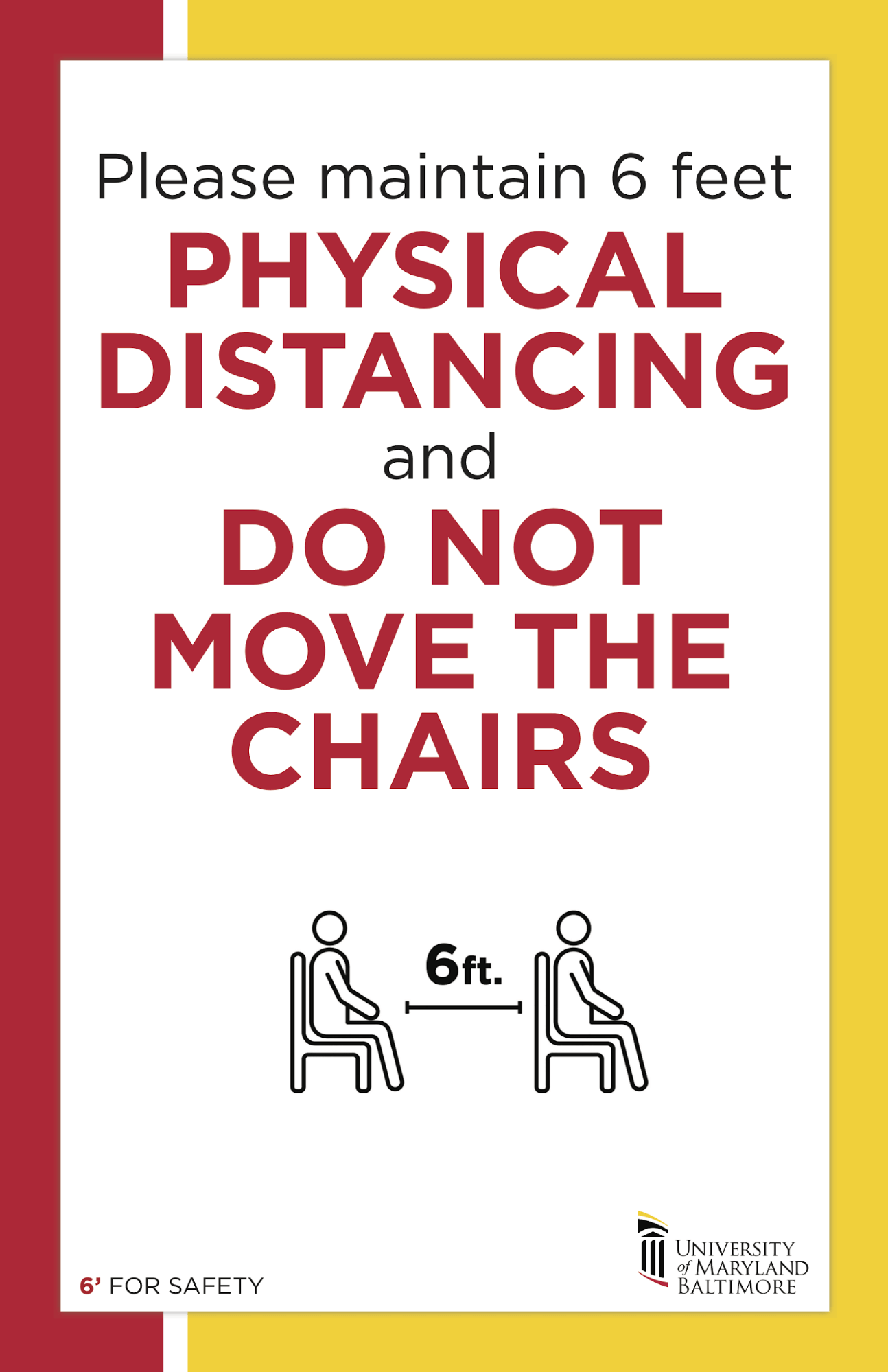
It’s a crucial piece of public health advice, but one that isn’t necessarily applicable to high schools, or to staff. It’s highly targeted, meaning if it’s displayed on the right screens at the right time it’s likely to be effective.
Targeting the location
From the same toolkit, this slide warns elevator users of physical distancing requirements:
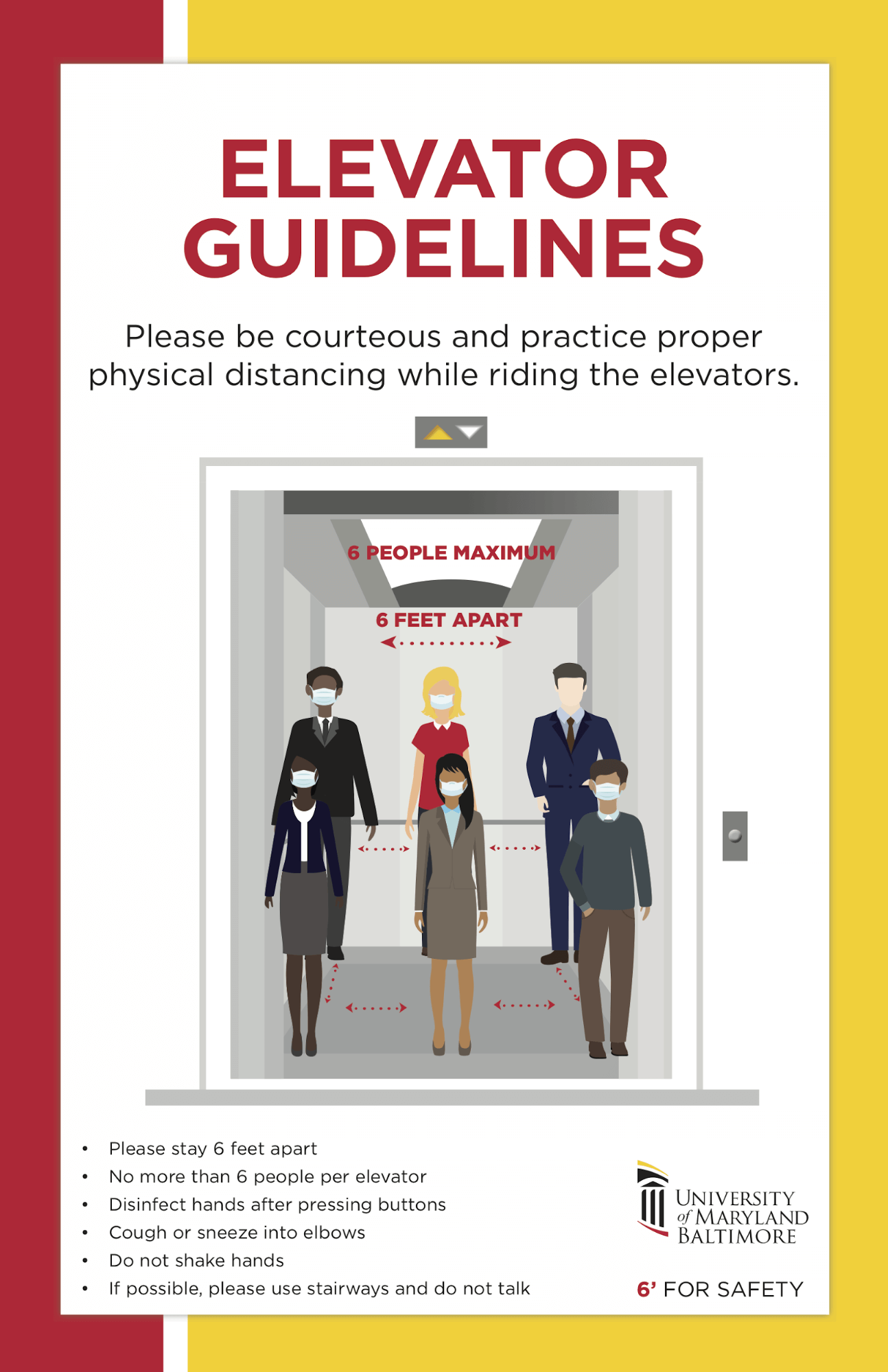
This one is targeted to an area, rather than to an audience: it’s aimed at everyone who’s using elevators in the UoM buildings, whatever their business there.
Signs like this, with broad applicability, are ideally used at ‘choke points’ and bottlenecks where large numbers of people will pass through. That can include elevators and stairwells, entrances and transportation hubs. Here, the messaging is conditional on the location or activity rather than the audience.
Let’s look at how to use Rise Vision’s templates library to set up COVID-19 digital signage for your school or university.
Using digital signage to combat COVID-19 in schools and universities: use cases
Before entering the building
Visitors, students and staff all need reminders before they even enter the building. Anyone who spends most of their time on another site needs to know what the rules are for your organization, and even your own staff and students benefit from regular reminders and updates.
Signs like this:
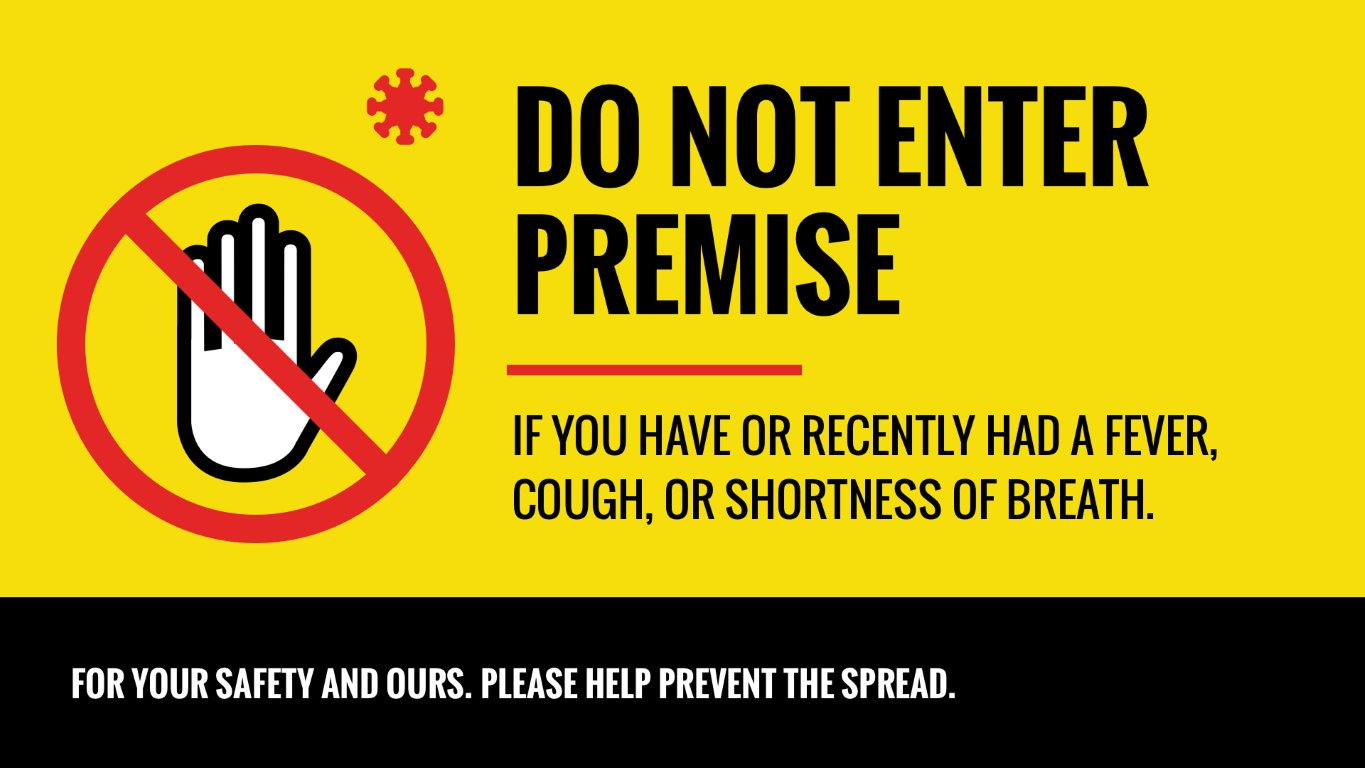
Help reinforce the urgency of COVID protocol compliance and drive down the risks of infection for everyone else inside the building. Repeating messages helps reinforce and normalize them — and not everyone has heard or assimilated the most recent or accurate guidance.
Social distancing
Social distancing is a crucial part of defense against the coronavirus. Signage has a part to play in encouraging social distancing, whether it’s reminding people of the necessity or reinforcing the right methods. The key to driving higher compliance is normalizing distancing via repeated consistent messaging.
For instance:
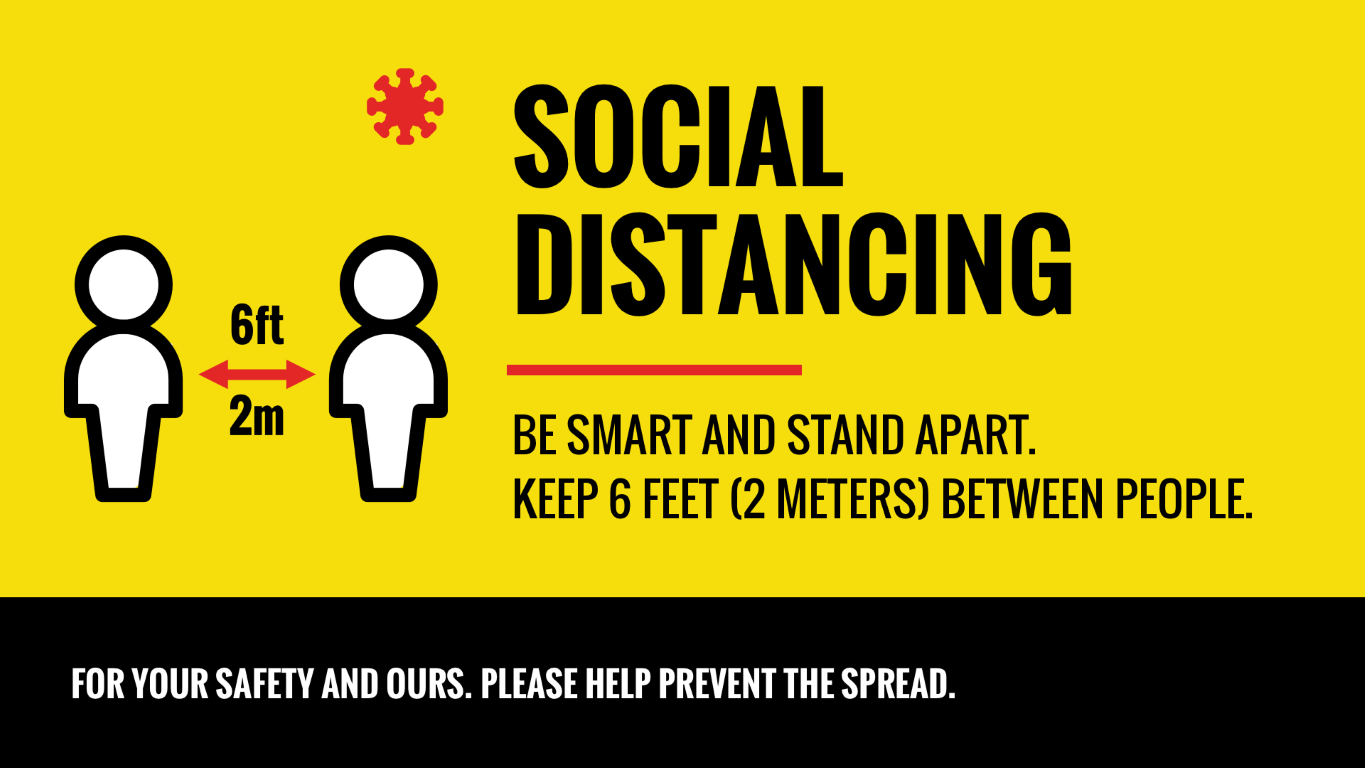
Easy to understand and remember, with a ‘hazard’ color scheme that drives the point home.
Social distancing doesn’t end with ‘stand apart,’ though. In different environments, distancing requires different protocols. Rise Vision offers solutions for those too. Whether it’s establishing maximum occupancies for rooms:
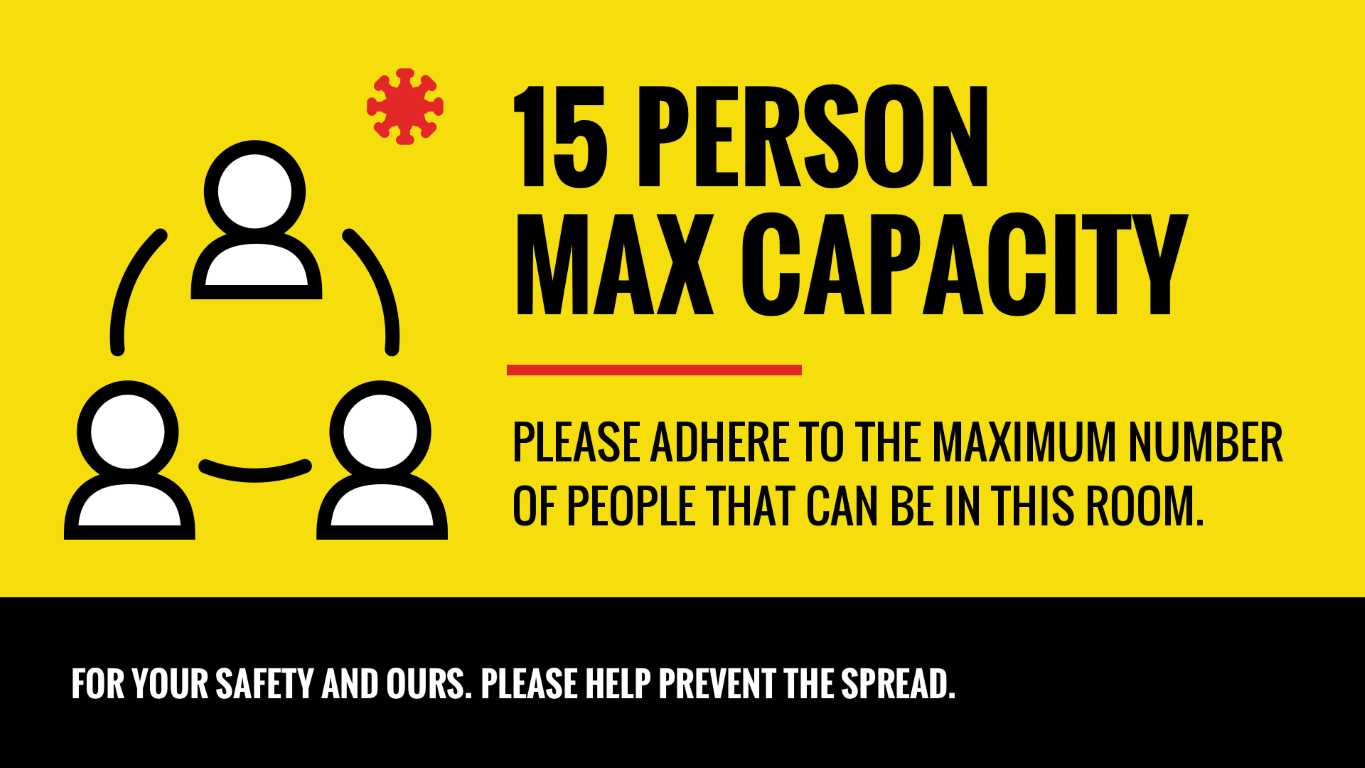
Or clarifying rules of behavior in stairwells or corridors:
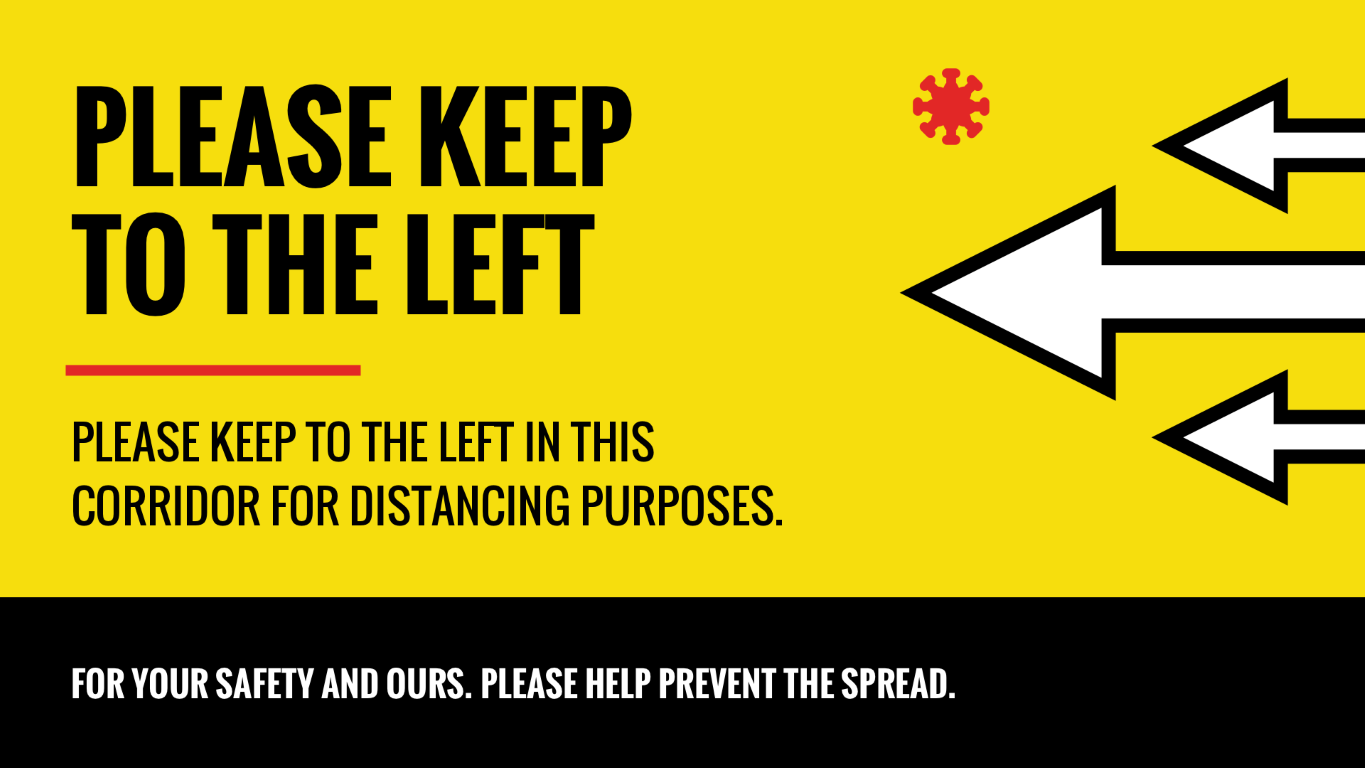
Handwashing
Handwashing is absolutely crucial COVID control behavior. We’re going to flatten that curve with soap and water. But most of us don’t wash our hands as often or as thoroughly as we should. Even doctors and nurses often don’t fully comply with hand washing protocols, so it’s no surprise the rest of us can sometimes struggle.
Hand Washing reminders installed in washrooms and hand sanitizing stations can help encourage the right behavior:
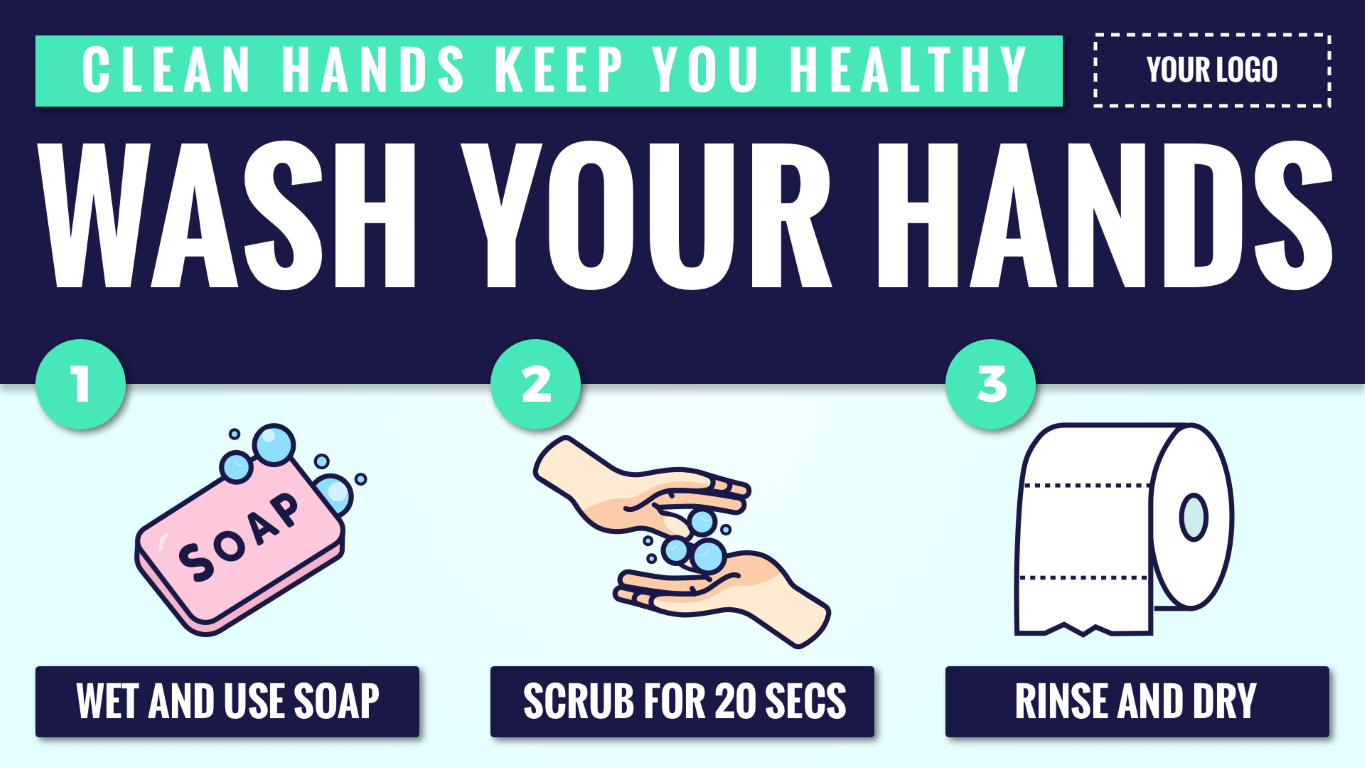
As with most Rise Vision templates, this one is brandable and clear. Colors can be changed to match your branding too.
Masks
Masks help limit the transmission of COVID-19 via water droplets from breath, speech, coughing and sneezing. They’re effective at stopping the virus escaping from infected people and to a lesser extent at stopping uninfected people from breathing in infected droplets. In some situations, masks are now becoming mandatory — and with good reason.
Rise Vision has templates to encourage mask-wearing too:
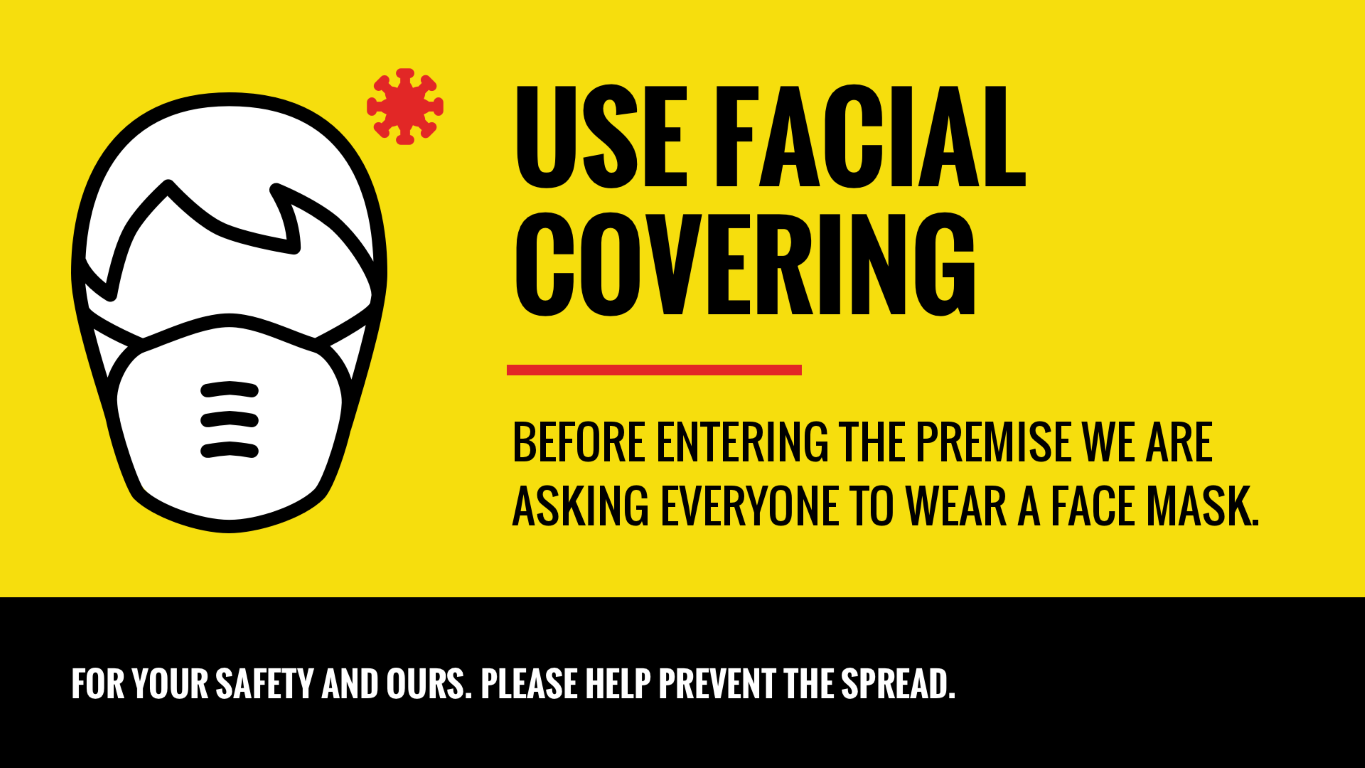
This can be useful in enclosed spaces like lecture halls, or where two populations come together — where large numbers of school visitors are in the same room, for instance. (This mirrors the guidance from some legislators.)
To see the full, and growing, list of Rise Vision COVID-19 templates, go here.
Wrap-up and takeaways
Digital signage can help encourage the behaviors that reduce the risk of COVID-19 — as long as it’s carefully targeted. You have to reach the right audience at the right time and the right place, meaning a dynamic digital signage tool will be more effective than an ad-hoc system. Rise Vision offers centralized, device-agnostic control via a dashboard and CMS, paired with a brandable template library to let you get your COVID-19 signage up and ready in minutes.
Other Rise Vision Guides:





